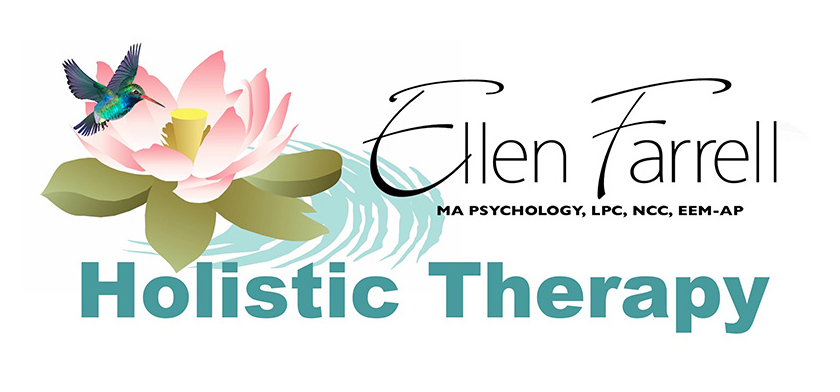How Can I Feel More Energy?
By Ellen Farrell, MA, NCC, LPC, EEM-AP
Hey Ellen, how can I feel more energy? I am exhausted!
Well, according to Dr. Linda Page, naturopath and author of the best-selling book, Healthy Healing, A Guide to Self Healing for Everyone, the five most common reasons for feeling depleted are:
1. Lack of sleep
2. Stress
3. Adrenal Exhaustion
4. Thyroid malfunction
5. Over-use of stimulants (caffeine, sugar, drugs)
Dr. Page also states that “fatigue-related complaints are one of the top five reasons people visit their physician.” Here are some fun facts:
- “Lack of sleep drains your energy, reduces immune response…<Lose 90 minutes of the “8 hours”= reduction of daytime alertness up to 33%!>
- Chronic stress takes an extra toll, targeting organs like the adrenal glands, taxing stores to depletion
- The adrenal glands are most affected by stress, emotional strain, anger …
- Because your thyroid gland governs your metabolism, its smooth running is crucial to providing vital energy resources.
- Since World War II, an above average number have developed thyroid problems … (likely) due to new chemicals/pollutants in our environment.
*Iodine was removed from our food supply in the late ’80’s and many foods that had iodine such as flour for bread had endocrine disruptors such as bromine added instead. also, flouride and chlorine are often in the water supply – these also interfere with iodine uptake. Himalayan salt is better, and you can find sea salt with iodine added. Regular table salt is stripped of all nutrients and is toxic.
– nervous system stimulants wipe out adrenals, leading to lowered energy levels. <*also be wary of aspartame/”Nutrasweet”, and other processed sugars, and MSG in its many forms>
So what can we do to correct these areas of imbalance?
Some simple things to maintain energy are – don’t waste time/energy with over-worry. Plan well, and make adjustments as needed. Find/work at relationships with people who inspire and encourage you! Spend time in nature. If you can’t be in nature – meditate on it!! Eat right, don’t overdue – keep addictive substances like alcohol to a minimum, get wellness support as needed, and ask yourself – what do I need to do to be healthy? Then listen, and act!
*2016 Update: what is enough sleep for you? Do you get at least 5-6 hours of uninterrupted sleep, with about 8-9 per night (some can make due with less, especially in later years).
Read Dr. Rubin Naiman’s book, Healing Night, or his blog posts for great information! Consider that environmental toxins are in our air, land and sea – and at the least, all non-organic food (chemically poisoned and stripped of many nutrients), has contributed greatly to immune & gut system issues in people, as well as to the degradation of our natural environments. Bees were added to the endangered list in 2016 – butterflies and birds, and fish have also been noted as having populations in decline.
Please invest in healthy sources of food, with no chemicals!
Buycott toxic food. Some good resources are:
http://www.nongmoproject.org/gmo-facts
http://www.march-against-monsanto.com
https://www.organicconsumers.org/categories/genetic-engineering
http://www.fooddemocracynow.org/about
Updated in 2016. Originally printed in the SCAD Chronicle 2006, under the heading, HEALTH GURU written by Wellness counselor, Ellen Farrell who was a clinical counselor and in 2006 she coordinated wellness and lifestyle management services in the department of student recreation and fitness.



